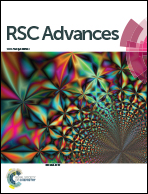Towards ferroelectricity-inducing chains of halogenoantimonates(iii) and halogenobismuthates(iii)†
Abstract
In halogenoantimonate(III) and halogenobismuthate(III) organic–inorganic hybrids, chains of trans-connected octahedra, trans-[MX5]∞, are considered attractive anionic structures for inducing ferroelectricity. The latter is realized by displacing the bridging halogen atoms along the chain direction – the process that changes the polarity of the whole unit. Advances in the identification of such materials have been hindered, however, by substantial difficulty in obtaining such structures. Here we investigate structural and dielectric properties of three families of compounds based on 2-mercaptopyrimidinium, 2-aminopyrimidinium, and 2-amino-4-methylpyrimidinium cations in which 8 out of 12 compounds show trans-[MX5]∞ chains in their crystal structures. Two of the compounds adopt a polar P21 space group and are potentially ferroelectric. We perform a detailed structural analysis of all compounds with trans-[MX5]∞ chains discovered by far to understand the factors that lead to the chains' formation. We reveal that the size of a cation predominantly defines the accessibility of structures with this anionic form and we provide rules for designing hybrids with trans-[MX5]∞ chains to help guide future efforts to engineer materials with interesting non-linear electrical properties.



 Please wait while we load your content...
Please wait while we load your content...